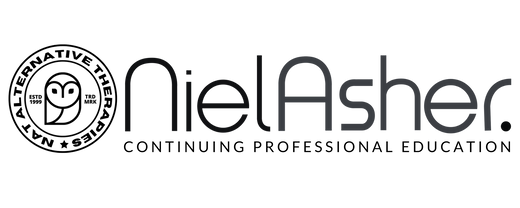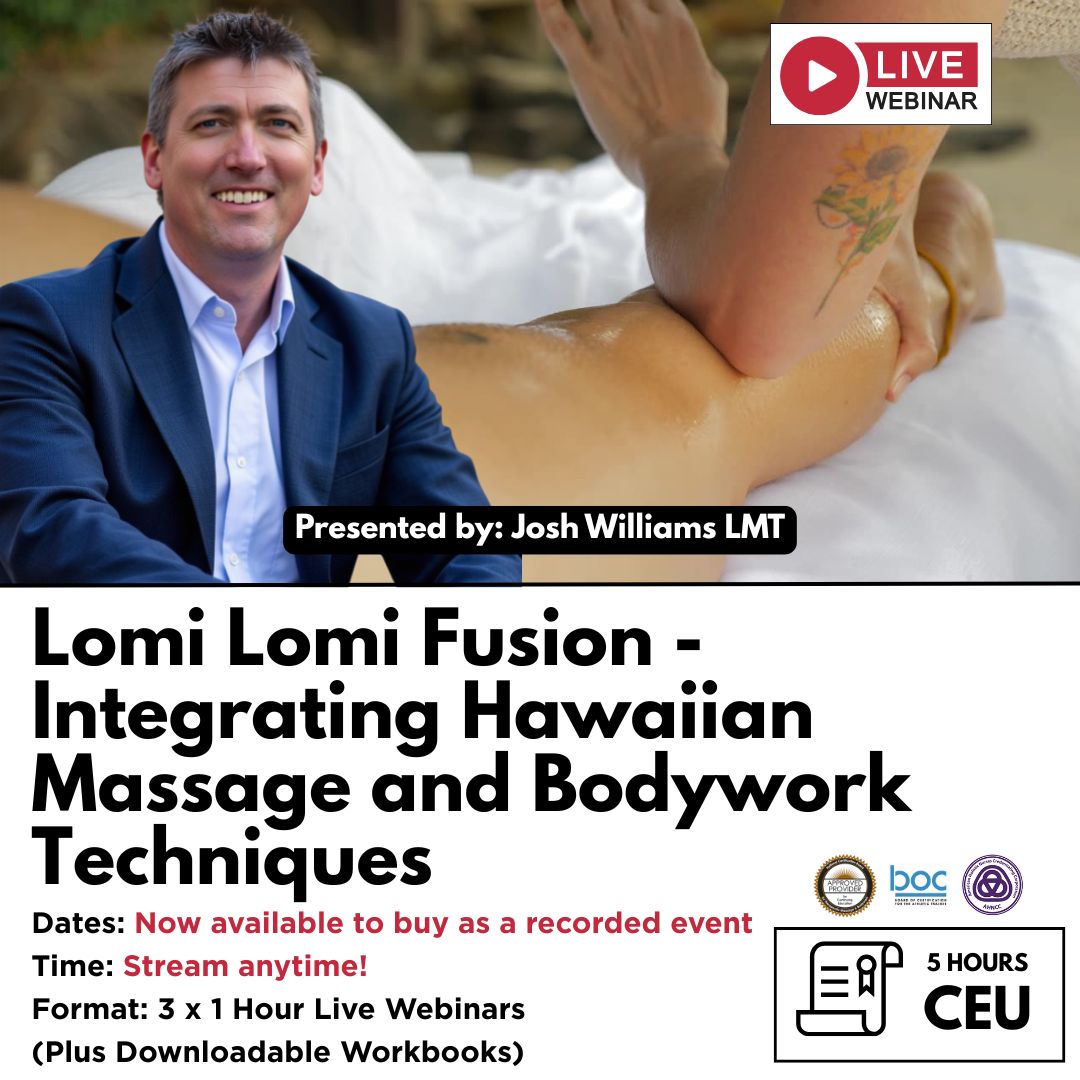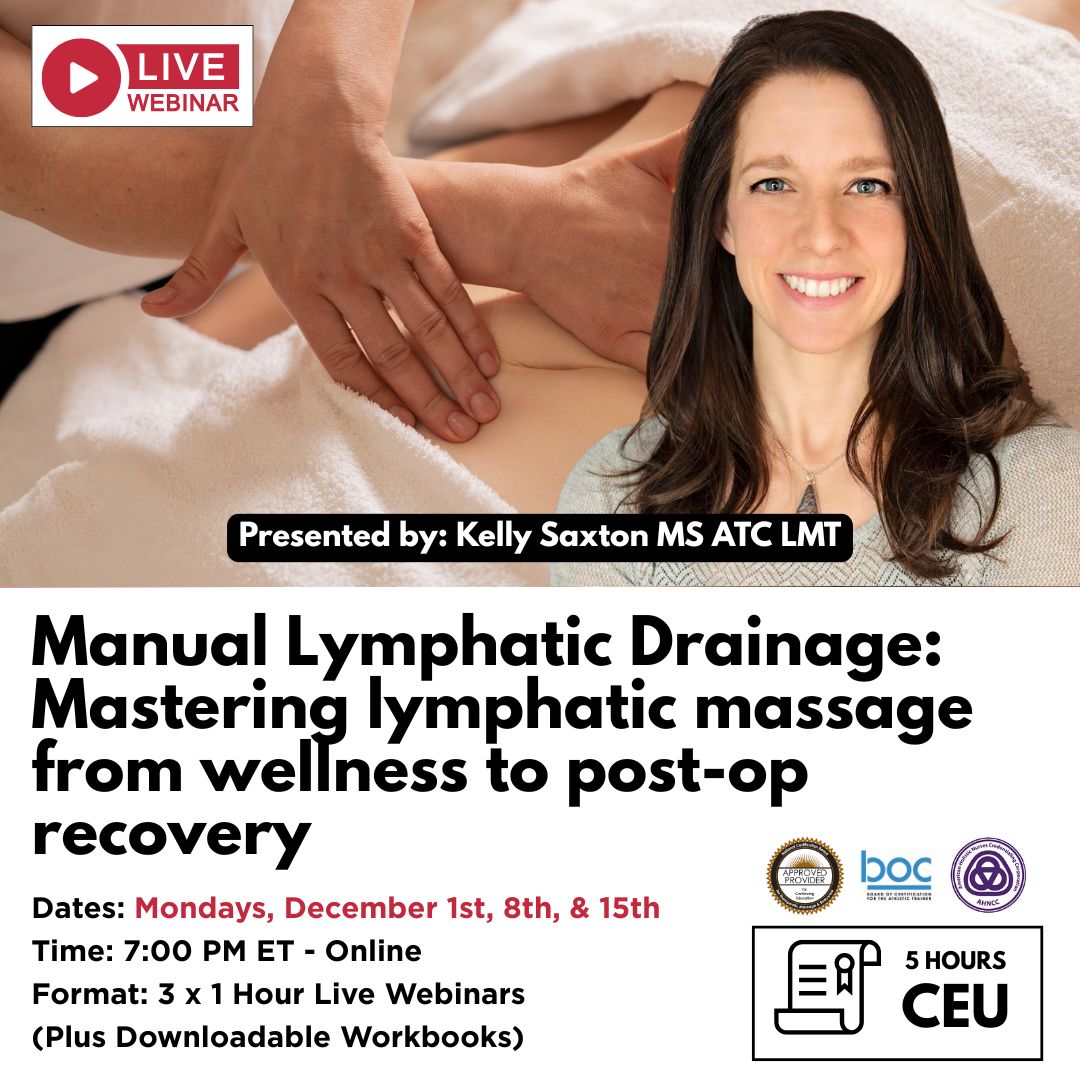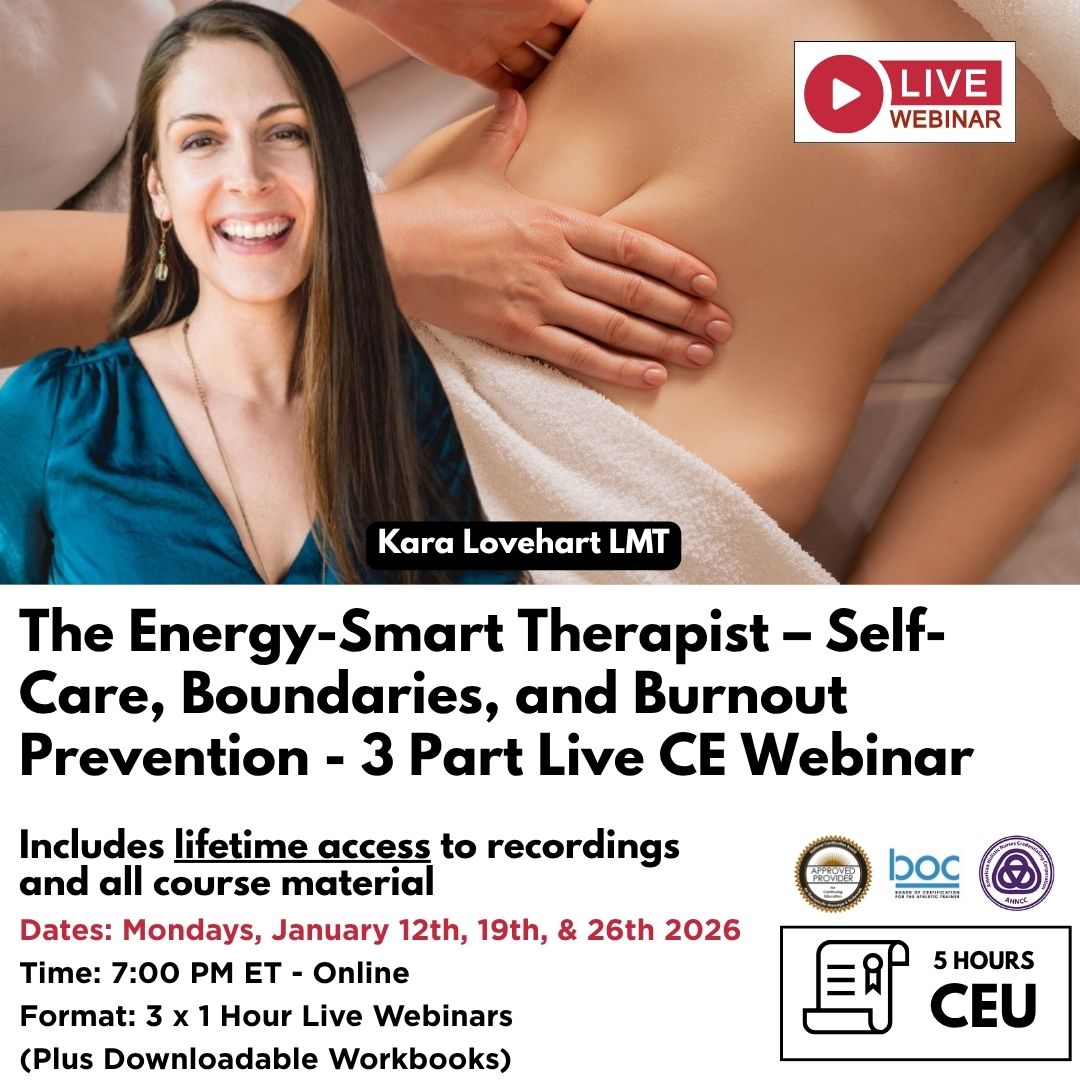Trigger Point Therapy - Intrinsic Hand Muscles
Intrinsic Muscles of the Hand - Trigger Point Overview
Painful conditions of the hands have been on the increase for the last 10 years. This is at least partly attributed to the use of hand-held smart devices.
A painful thumb, fingers or hand can be pretty uncomfortable and debilitating and clients often assume that they are suffering from some form of arthritis or the well-known carpal tunnel syndrome.
In fact, many of these cases are related to trigger points that can be quite easily treated.
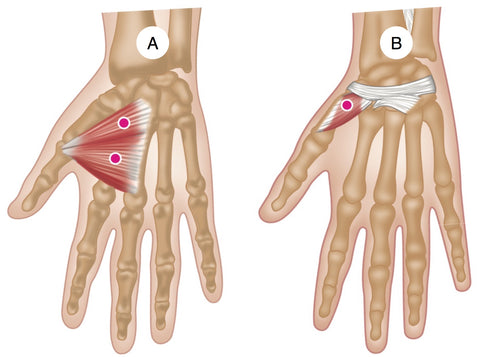
Common Trigger Point Sites - Adductor Pollicis (A), Opponens Pollicis (B)
About these Muscles
Adductor: Brings thumb back to palm from abduction. Opponens: Draws the thumb towards the fingers so that the thumb tip can touch any fingertip.
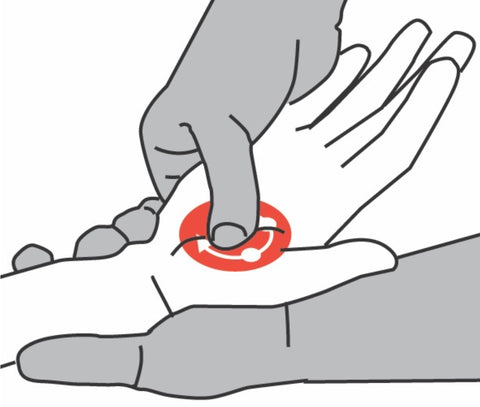
Trigger Points in these muscles can usually be treated quite easily - pressure tools are recommended.
Trigger Points
Trigger points in these small muscles of the hand cause their characteristic pain patterns (see illustrations below), along with clumsiness of the thumb, and a great deal of misunderstanding concerning the attention and care of the owner of that thumb.
The ability to catch, grip and pinch may be compromised or lost. Tasks requiring agility and control—such as buttoning, writing, typing, and operating machinery—become difficult and frustrating because of muscle weakness and loss of fine motor control.
It's worth noting that that the opponens muscle itself is often free of pain, yet that area must be treated.
The three muscles that make up the thenar eminence are tightly bound together by fascia, and that fascia is tough.
The opponens pollicis is covered by the abductor pollicis brevis and often partially fused with the flexor pollicis brevis.
Palpation of the opponens pollicis is difficult, but don’t be dismayed—you can treat them all at once!
Notable Perpetuating Factors
Any pincer-type motion, such as weeding, sewing, opening jars, writing, texting, video gaming, computer keyboarding, or handcrafting, and any task involving excessive or repeated thumb pressure.

Adductor Policis - Typical Pain Pattern
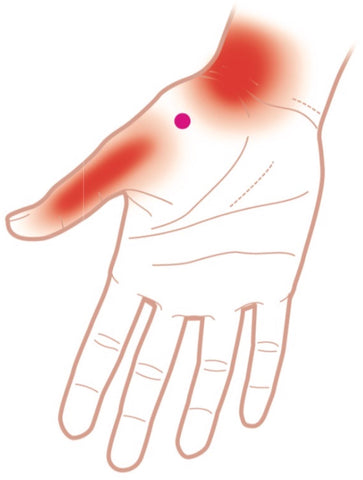
Opponens Policis - Typical Pain Pattern
General Advice for Patients
Avoid rotational stress to the wrist such as that caused by repetitive use of a screwdriver. Pace tasks that use similar motions. Use the opposite hand when possible, and modify, delegate, or delete tasks when life allows.
Avoid persistent grasping and pulling motions such as vigorous weeding or even use of your mobile phone. Try switching hands when using and operating your mobile or tablet device.
Not that anyone seems to do too much writing nowadays, but if you do, use a soft tipped pen for writing, and take regular breaks. These trigger points will respond well to stretching, manual therapy, and the use of pressure tools can be very effective.
General Advice for Therapists and Care Providers
In many cases opponens trigger points are be mistaken for carpal tunnel syndrome, de Quervain’s stenosing tenosynovitis, or arthritis.
These trigger points are especially common in clients who have previously suffered from a fracture.
Stretching, especially spray and stretch can be very effective (see below).
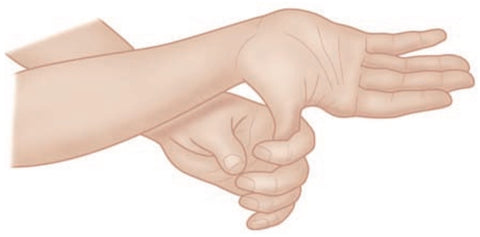
Opponens Pollicis Trigger Points - use one hand to stretch the opposite thumb. This is a recommended general stretch for anyone working with their hands.
Stretching
A simple self-stretch for the opponens pollicis can be done using one hand to stretch the opposite thumb.
Keep the fingers of the involved hand flat, and stretch the involved thumb gently through range of motion until you feel the first sense of bind then return to start and repeat.
An easy self-stretch for the adductor pollicis involves filling a basin with moderately warm water and pressing the hand palm down with thumb and index finger widely spread on the bottom of the filled basin.
As with all stretching, the idea is to avoid unduly stressing the tissues while encouraging normal range of motion.
Links
Find a Trigger Point Professional in your area
More Articles About Trigger Points - Hands and Fingers
Trigger Point Therapy Workbooks
Dry Needling for Trigger Points
Certify as a Trigger Point Therapist
About NAT Courses
As a manual therapist or exercise professional, there is only one way to expand your business - education!
Learning more skills increases the services that you offer and provides more opportunity for specialization.
Every NAT course is designed to build on what you already know, to empower you to treat more clients and grow your practice, with a minimal investment in time and money.
Help Desk
About Niel Asher Education
Niel Asher Education is a leading provider of distance learning and continued education courses.
Established in the United Kingdom in 1999, we provide course and distance learning material for therapists and other healthcare professionals in over 40 countries.
Our courses are accredited by over 90 professional associations and national accreditation institutions including the National Academy of Sports Medicine (NASM) and National Certification Board for Therapeutic Massage and Bodywork (NCBTMB).
Full details of all international course accreditations can be found on our website.
Printed course materials and other products offered on our websites are despatched worldwide from our 3 locations in the UK (London), USA (Pennsylvania) and Australia (Melbourne).
More About Us
NAMTPT AWARD 2017
We are honored to have received the 2017 "Excellence in Education" Award from the National Association of Myofascial Trigger Point Therapists.
Since 1999 Niel Asher Education has won numerous awards for education and in particular for education and services provided in the field of trigger point therapy.
Read Full Article
Award Winning Instructors
Niel Asher Healthcare course instructors have won a host of prestigious awards including 2 lifetime achievement honorees - Stuart Hinds, Lifetime Achievement Honoree, AAMT, 2015, and Dr. Jonathan Kuttner, MD, Lifetime Achievement Honoree, NAMTPT, 2014.
Meet the Instructors
NAT Certification
If you are a qualified/licensed manual therapist or exercise/fitness professional you can expand your credentials with NAT certification.
In addition to national accreditation for continued education, each course that we offer includes "NAT Learning Credits". By taking and completing courses you can accumulate NAT credits to qualify for NAT certification.
There are currently 3 levels of NAT certification. Certifying NAT is a valuable way to show your clients that you take continued education seriously, and to promote your skills and qualifications.
About NAT Certification
Niel Asher Technique
Since 1999 the Niel Asher Technique for treating trigger points has been adopted by over 100,000 therapists worldwide, and has been applied to the treatment of a number of common musculoskeletal injuries.
The Niel Asher Technique for treating frozen shoulder was first introduced and published in 1997 and has been widely adopted by therapists and exercise professionals working within elite sports and athletics.
Read More
Worldwide Free Shipping
Most of our courses are available as either "Printed" or 'Download" editions. When you purchase a download edition, you receive immediate lifetime access to all course material. Course texts can be downloaded and printed if required.
When you purchase a "Printed" edition, you will also receive free access to the download edition.
We ship Worldwide from locations in the USA, UK, and Australia. Most items are despatched within 24 hours and shipping is FREE for all orders over US$50.
Shipping
Where to Start?
We offer a range of over 50 courses, presented by some of the worlds leading manual therapists. All courses are reviewed annually, and new courses are regularly added.
Our courses are modular, and designed to build on what you already know. For more information, please visit our "Where to Start?" page.
Start Here
This trigger point therapy blog is intended to be used for information purposes only and is not intended to be used for medical diagnosis or treatment or to substitute for a medical diagnosis and/or treatment rendered or prescribed by a physician or competent healthcare professional. This information is designed as educational material, but should not be taken as a recommendation for treatment of any particular person or patient. Always consult your physician if you think you need treatment or if you feel unwell.
Disclaimer
The information in this article is intended for educational purposes within the context of continuing education for massage therapists, continuing education for athletic trainers, continuing education for physical therapists, continuing education for chiropractors, and continuing education for rehabilitation professionals. It is not a substitute for medical advice, diagnosis, or treatment. Although every effort has been made to ensure accuracy and reflect current understanding at the time of publication, practitioners must always work within the legal scope of their professional practice and follow all regional regulatory guidelines.
Hands-on techniques and clinical applications described in this material should only be performed by appropriately trained and licensed professionals. Individuals experiencing pain or symptoms should be referred to a qualified healthcare provider for assessment. Niel Asher Education is not responsible for any injury, loss, or damage resulting from the use or misuse of the information provided in this content.

Continuing Professional Education
Looking for Massage Therapy CEUs, PT and ATC continuing education, chiropractic CE, or advanced manual therapy training? Explore our evidence-based online courses designed for hands-on professionals.
